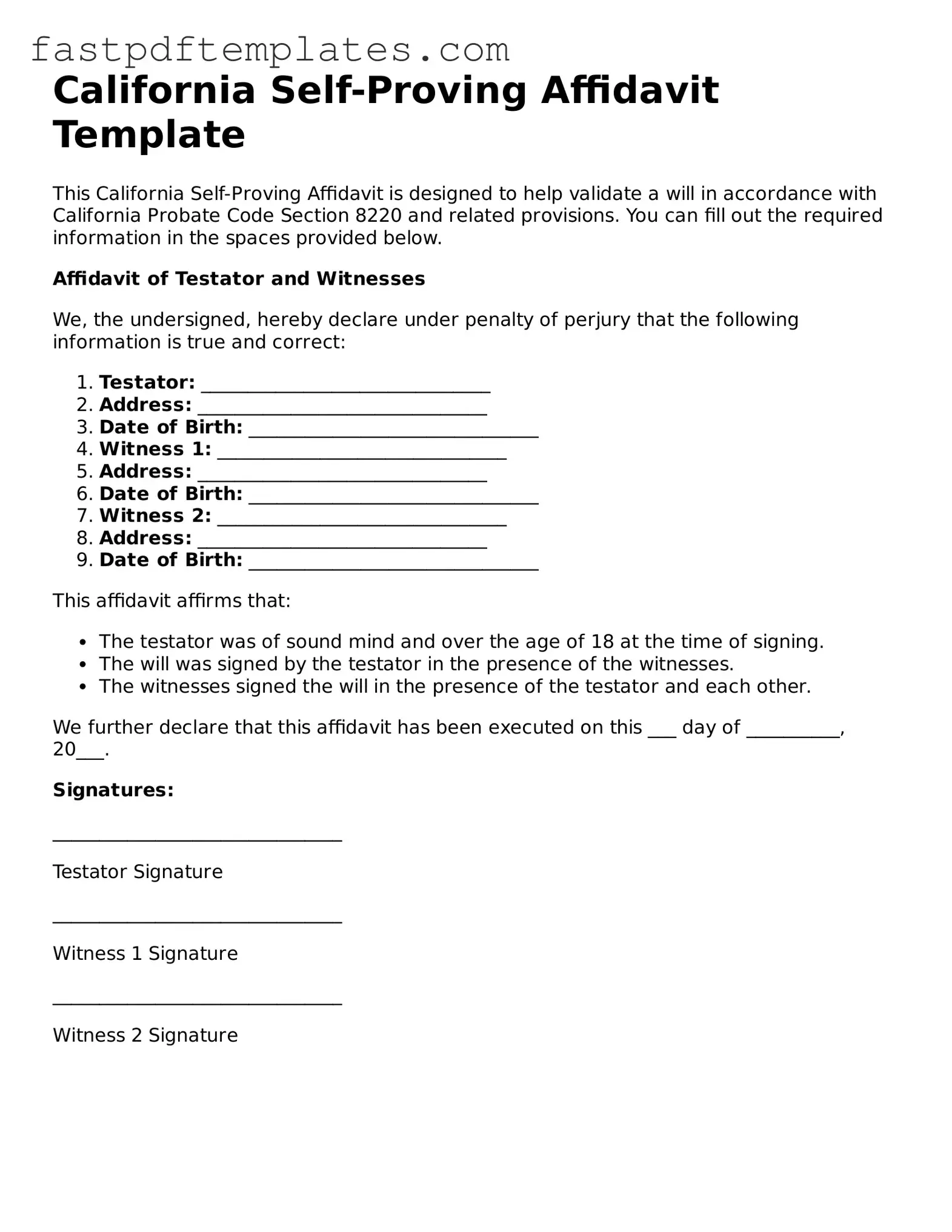The California Self-Proving Affidavit is a legal document that allows a testator's will to be accepted as valid without the need for witnesses to testify in court. This form shares similarities with the Affidavit of Execution, which is used to affirm that a will was properly signed and executed in accordance with state law. Both documents serve to streamline the probate process by reducing the need for witness testimony, thus making it easier for the estate to be settled in a timely manner.
Another document akin to the Self-Proving Affidavit is the Will Contest Affidavit. This affidavit is used when someone disputes the validity of a will, often requiring the affiant to provide proof of the will's authenticity. Like the Self-Proving Affidavit, it serves as a means to establish the legitimacy of the document, but it focuses on countering claims rather than affirming the will's validity upfront.
The Affidavit of Witnesses is also similar in purpose, as it provides testimony from witnesses who observed the signing of the will. While the Self-Proving Affidavit eliminates the need for such testimony, the Affidavit of Witnesses still plays a critical role in situations where the self-proving option is not utilized. Both documents aim to confirm the will's execution, but the Affidavit of Witnesses requires direct witness involvement.
The Durable Power of Attorney is another relevant document. While it serves a different function—granting authority to someone to act on another's behalf—it also requires an affidavit to affirm its validity in certain situations. Both documents involve an individual’s intent and must be executed with a clear understanding of the consequences, thus ensuring that the wishes of the principal are honored.
Similarly, the Living Will can be compared to the Self-Proving Affidavit in that it outlines an individual’s preferences regarding medical treatment. While the Self-Proving Affidavit pertains to estate matters, both documents require a clear expression of intent and may need to be validated through similar legal processes, ensuring that the individual’s wishes are respected.
The Revocable Trust Declaration shares some similarities with the Self-Proving Affidavit, as both involve the management of an individual’s assets. A revocable trust can provide a smoother transition of assets upon death, similar to how a self-proving will facilitates the probate process. Both documents aim to clarify the individual’s intentions regarding asset distribution, although they operate within different frameworks of estate planning.
The Affidavit of Heirship is another document that bears resemblance to the Self-Proving Affidavit. This affidavit is often used to establish the heirs of a deceased person when there is no will. Like the Self-Proving Affidavit, it provides a formal declaration that can expedite the legal process, helping to clarify the distribution of assets without the need for lengthy court proceedings.
The Certification of Trust is also noteworthy. While it serves to confirm the existence and terms of a trust, it can function similarly to the Self-Proving Affidavit by simplifying the process of proving a trust's validity. Both documents help to avoid disputes and streamline the transfer of assets, ensuring that the intentions of the trustor or testator are honored.
Lastly, the Affidavit of Identity can be compared to the Self-Proving Affidavit in that it serves to confirm an individual's identity in legal matters. While the Self-Proving Affidavit affirms the validity of a will, the Affidavit of Identity may be required to authenticate the identity of a person executing any legal documents. Both documents play a crucial role in ensuring that legal processes run smoothly and that the intentions of the individuals involved are clearly established.
